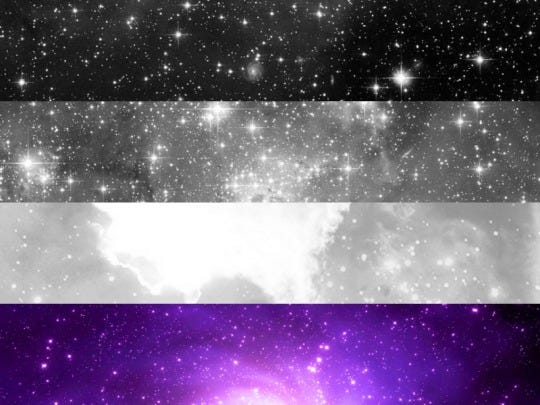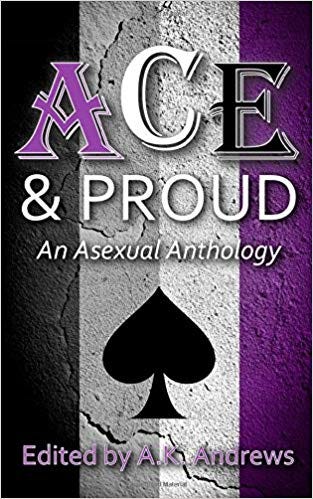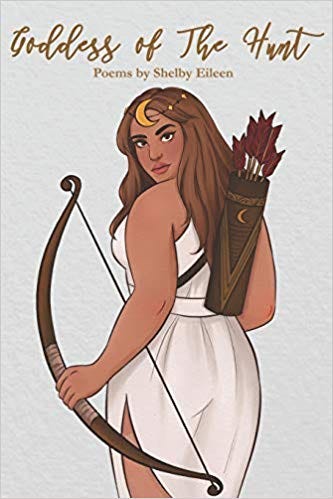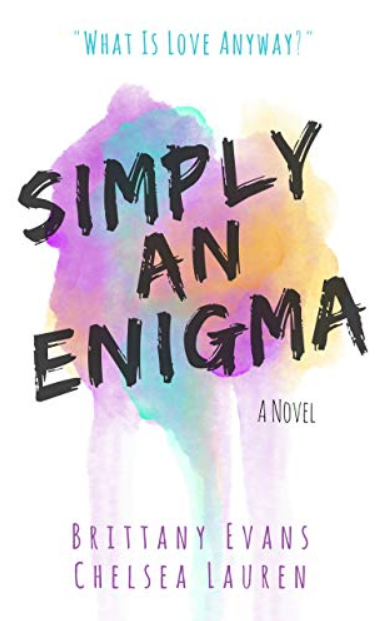
Representation matters. And for someone asexual, representation is hard to come by. Though asexual characters do exist — like Todd Chavez from Bojack Horseman and Jughead from Archie (only the comics, not the TV series) — they’re few and far between. Many people don’t even know what asexuality means, or they think it’s something made-up. Abnormal.
In reality, asexuality is diverse, valid, and worth celebrating. And literature has started embracing it.
Asexuality is — at its most basic level — the absence, or near absence, of sexual attraction. It doesn’t necessarily mean a lack of aesthetic attraction, and it doesn’t make a person cold, self-absorbed, or boring (or any other stereotype). Some asexuals experience romantic attraction, though others are aromantic and don’t experience it at all. Some asexuals identify as gray asexual or graysexual, meaning they infrequently but sometimes experience sexual attraction. Other asexuals fall under the demisexual umbrella, only feeling sexually attracted to someone after forming a strong bond with them.
I’ve recently been on a kick to find books with ace authors and characters. The search was harder than I expected, but I met some great ace writers along the way, and I was introduced to some truly spectacular books. Whether you’re ace, questioning, or just curious, these books offer a kind, clear introduction to asexuality. And even (/especially) if you’re new to the concept of asexuality, these books deserve a read.
1. Ace and Proud: An Asexual Anthology edited by A.K. Andrews

Ace and Proud: An Asexual Anthology is a compendium of nonfiction accounts by asexual authors. Many of these essays are written conversationally, though some are more experimental or poetic. The accounts were compiled by the Asexuality Visibility and Education Network (AVEN), a leading platform for asexuality resources and discussion, so it’s no surprise that the organization is mentioned frequently, alongside other ace websites and support networks.
The accounts are all short, just a few pages — they’re quick reads, but they don’t fully explore some of the authors’ feelings or experiences. However, the pieces provide a starting point for anyone new to asexuality. Several of the essays tread similar territory (feelings of brokenness, faking crushes as a teenager, experimentation with different labels), but the majority are distinct.
This anthology is straightforward about what it offers and why. I’d recommend it to anyone new to asexuality or who wants to learn more. While it may not cover every experience or go into great detail, it does provide a baseline for understanding, as well as encouragement for every ace individual to feel proud of themselves and their orientation.
2. Goddess of the Hunt by Shelby Eileen

Eileen’s Goddess of the Hunt revisualizes the story of Artemis through several poems focused on the character’s asexuality and aromanticism. Empowering accounts of other Greek deities, including Hera and Persephone, appear as well, creating a moving, feminist read. Each poem is told in the first person, with a focus on nature, family, and strength. As Artemis says, “the only thing keeping them from saying I had it all is my missing love story.” However, Eileen shows that Artemis doesn’t need (nor want) romantic and sexual love, and she’s at her happiest when allocentric views aren’t being pushed onto her.
Along with focusing on the characters’ asexuality and aromanticism, Eileen highlights Artemis’ loved ones and the ways they support and/or reject her journey. I was a big fan of Leto’s accounts, since so many ace “coming out” stories center around parents who don’t understand. Characters like Leto and Aphrodite offer Artemis acceptance, which allows her to be the kickass deity of myth. Similarly, some of the poems focus on Artemis accepting her inability (and lack of desire) to live up to expectations, ultimately showing that being true to herself is the perfect choice.
For someone who isn’t aromantic, Goddess of the Hunt provides an accessible way of understanding people who don’t feel particularly moved by romantic attraction. Like with Ace and Proud, Goddess of the Hunt is an easy, captivating read, which is equally educational and entertaining.
3. Simply an Enigma by Brittany Evans and Chelsea Lauren

Simply an Enigma is the story of Julian and Quinn, two teenagers trying to figure out love. Toxic masculinity is a running theme, best represented by three members of their friend groups — Tyler, James, and alpha-male Adrian— who are ostensibly obsessed with women and sex. Julian realizes his friends’ actions are screwed up, and yet, he continually wonders if he’s really the one there’s something wrong with. Unlike his friends, Julian has no interest in sex, even when he starts dating the beautiful, sex-positive Quinn.
Quinn enjoys sex, and it can be many things to her — sometimes meaningless, sometimes fun, but ultimately, it’s something she considers a need. She’s been the subject of many rumors and misogynistic slurs. Her reputation as “easy” is the very reason why wingmen Tyler and James want to set her up with Julian, who isn’t initially comfortable with the idea.
When Quinn starts dating Julian, she starts craving a more romantic relationship. Julian feels the same way, and for a while, they’re content to hold hands and kiss. However, their relationship quickly sours when Quinn realizes that Julian doesn’t share her feelings about sex. Unfamiliar with the term “asexual,” Julian is unable to explain his feelings. He makes several regrettable choices, questions his sexuality, and ultimately finds support at his school’s LGBTQ+ club.
If I were to offer critique, some of the books’ sex-shaming isn’t fully addressed or pushed back against, and in a book so full of important details about sexuality, it seems like there’s more to say about those shaming behaviors. Similarly, some parts of Julian and Quinn’s relationship seem a little rushed — while that didn’t detract from the overall read, it did make me question how serious these two are about each other and how much more they have left to learn. However, the breakdown of sexual and romantic concepts, although on the academic side, is useful to those new to the terminology. Simply an Enigma is well-suited for a YA audience, offering the language and setup to better understand asexuality and aromantic relationships.
Each of these books includes a message to the ace community, letting us know we matter; we’re real; we’re not broken. As Eileen says, “I hope one day we have more books to hold like mirrors and see our own normal reflected back at us,” and as Evans and Lauren say, “You are human, you are loved, you are not abnormal. There is absolutely nothing wrong with you.” I’d like to offer a similar message — asexuality isn’t something that needs to be fixed. It’s something that needs to be discussed and normalized. Thanks to books like these, asexuality is becoming better understood, more visible, and more accepted. And most importantly, asexual people can see ourselves in these books, feel loved, and know that we deserve as much shelf-space as everyone else.
Ace Visibility: 3 Books About Asexuality to Add to Your Library was originally published in Anomaly on Medium, where people are continuing the conversation by highlighting and responding to this story.
